Week 1
How does Sol LeWitt express the notion that “the idea is the machine that makes the art” in his work? What does the artist’s actual hand have to do with the final work in a conceptual art context?
Sol LeWitt creates his art by making blueprints of his ideas and passing them along to others. The curator compares LeWitt’s approach to composing music in that he creates instructions to be realized by others that can be repeated. While LeWitt’s contribution ends at articulation of the idea, this is a collaborative effort between the artist leading and the various people who realize the work. Those who do as instructed to finish the work have no creative input, and although they are crucial to the process, the art is ultimately formulated by LeWitt. In this way he supports the notion that ideas are what make art.
In terms of the relation between conceptual art and the finished product, the artist is instrumental as the decision maker while not being physically involved. I noticed one of the comments on the video was “Need other artist to do the work”. I’m assuming this is to discredit LeWitt’s involvement. Youtube comments are generally not the place for constructive discussions or passable grammar, but I find myself relating to this person’s sentiments. I don’t personally like the concept of allowing unrelated people to realize an idea in the context of creating art because it strips them of their free will and creative input and in this way they become tools or machines, like a pencil or paintbrush. At the same time however, I don’t think this method of creating art is inauthentic or wrong because the artist is using tools to bring his vision to life, like any artist. Whether or not LeWitt physically creates the final artwork does not matter, and although I would argue that he does not put in the effort that a sculptor or painter would, art is not assessed by the effort one puts in but by the finished product.
Where do you draw the boundaries around artworks in this video? What are the artworks? What strategies and tools does Ono use to challenge the viewer? Do you like any of these concept works? Discuss.
Yoko Ono’s video and statements seem to aim to transcend the boundaries of what can be considered art. The interactive concepts suggested appear to challenge the viewer to improve their habits and instill a greater sense of mindfulness. The concepts largely focus on mundane interactions with the world and people around them, such as visiting friends or listening to the breathing and heartbeats of others. Also included are absurd instructions such as “fly”, which aren’t elaborated on but I assume they are meant to be replicated however the viewer intends. I enjoy these absurd instructions the most because of how matter-of-factly they are said.
Describe two works by Bruce Nauman (include images) where he frames every day actions (non-heroic, banal) as art. How are they “framed” as art, and what does the framing do to our understanding and experience of the actions?
Bruce Nauman frames everyday actions as art, and this approach hinges on his outlook that because he is an artist, whatever he does in his studio is art. One piece that arises from this is his collection of videos Wall-Floor Positions. He recorded his own regular, sometimes awkward positions that most would be capable of replicating.
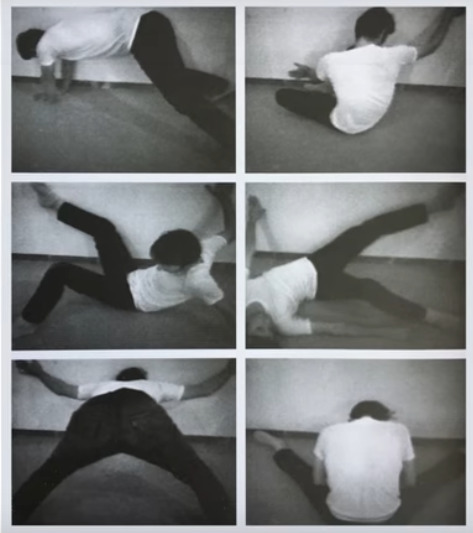
Another of Nauman’s pieces, Coffee Spilled Because the Cup Was Too Hot, is a simple photograph of a cup of coffee that has been partially spilled on a flat surface. Although this is a mundane activity, the colours involved and the composition of the picture make for an interesting image.
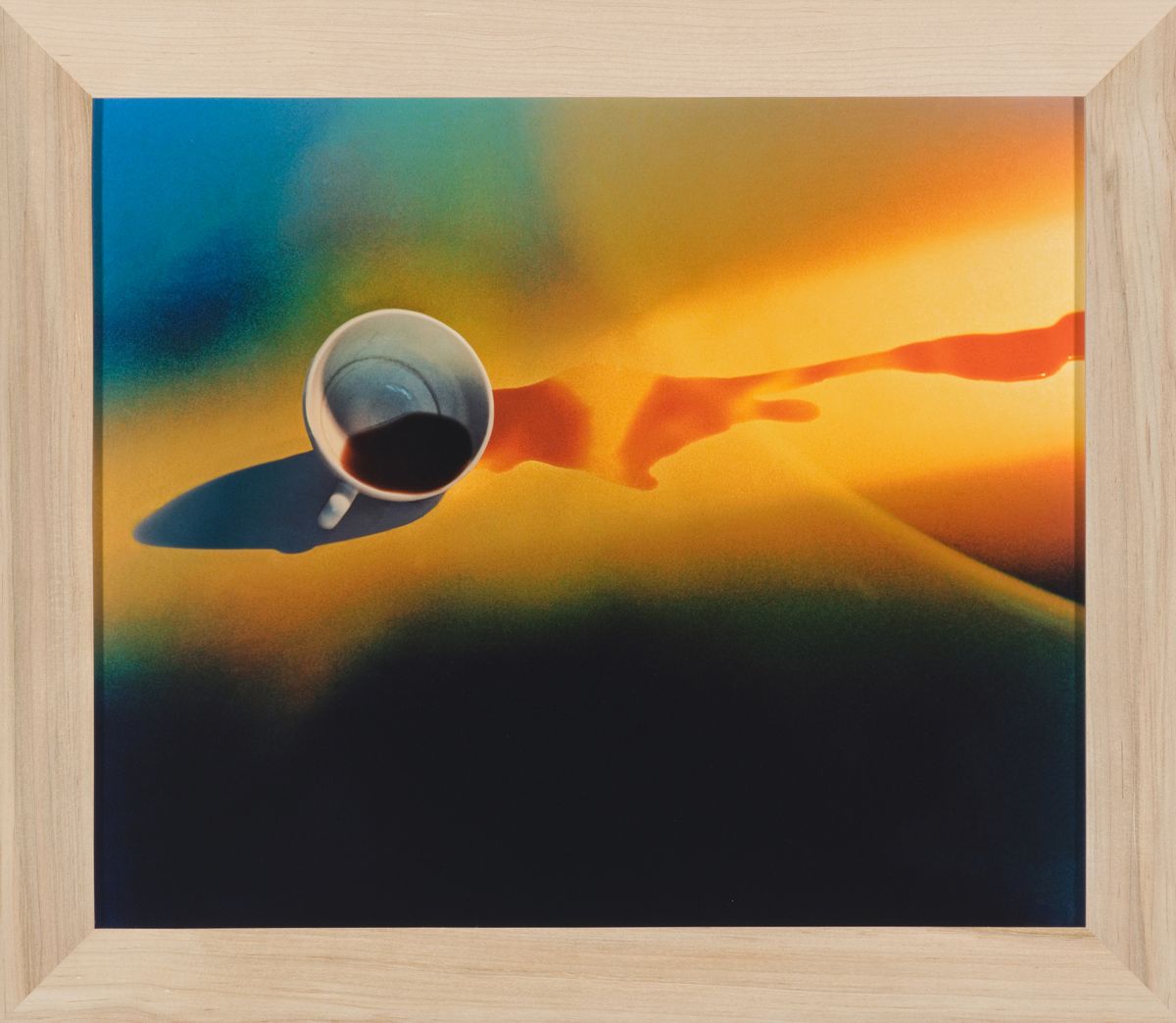
Framing mundane things as art in both of the aforementioned cases leads one to expect to derive meaning from the image, or at least to analyze the composition and form an opinion on it. What would usually be an unremarkable but strange position or an inconvenient mistake in a morning routine can be looked upon in a different light and become interesting aesthetically.
—
For my kilometre assignment, I decided that I would illustrate the length of a kilometre through the cumulative length of the largest animal in the world, the blue whale. A blue whale will reach an average length of twenty five meters, meaning that approximately 40 adult blue whales placed end to end would stretch a kilometre long. Instead of presenting them end to end however, I thought it would be more interesting to take a picture of a blue whale and make it into a 5×8 tiled image. For me, this presentation of a kilometre makes it both something small and something incredibly massive. It simultaneously gives me a greater appreciation of this distance when the largest animal is dwarfed by it, but also makes it seem quite small when I think that I would only have to walk the length of forty whales to walk a kilometre.
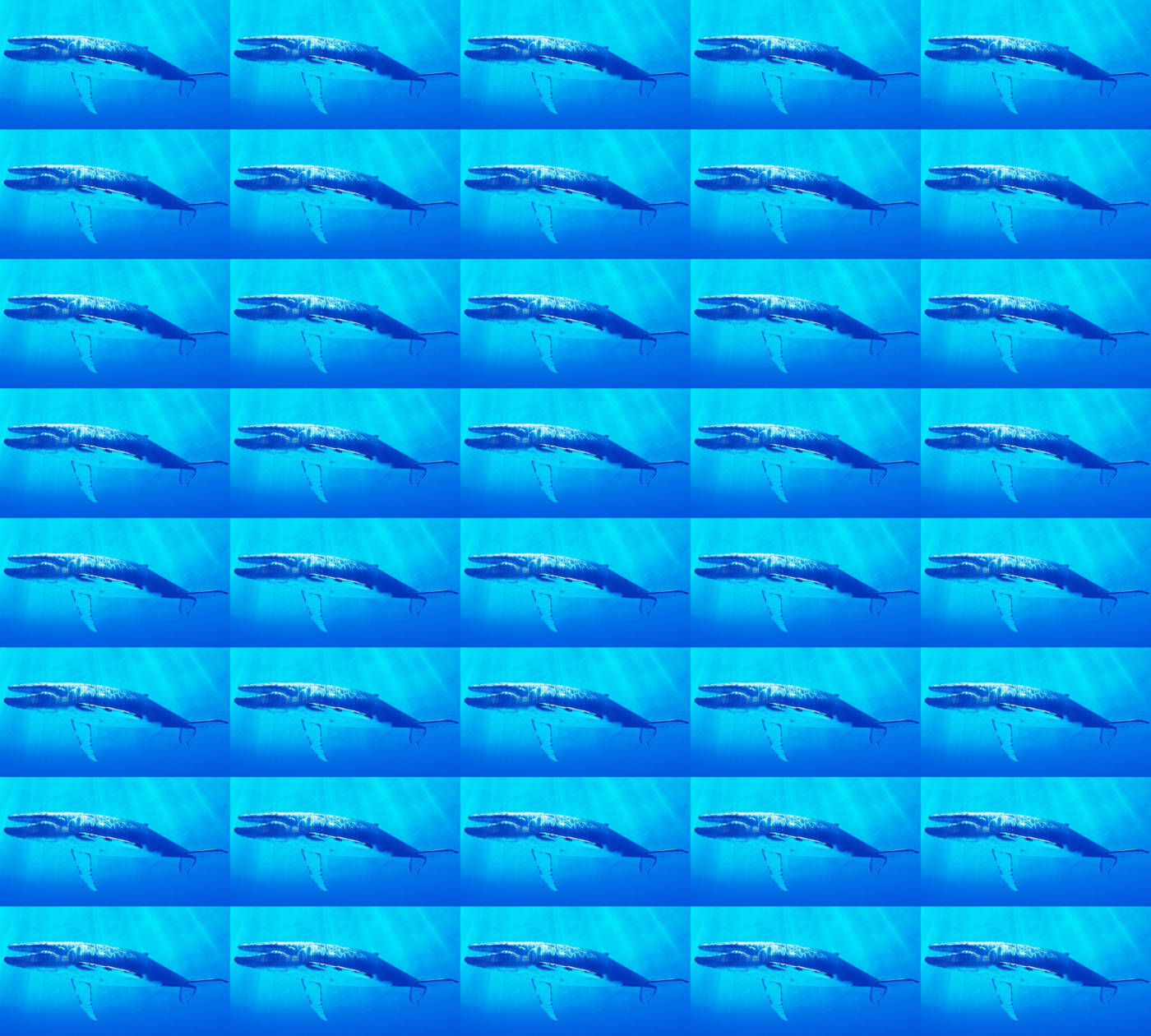
I would have liked to multiply images of even more animals, but unfortunately the smaller the animal gets, the larger the tiled image becomes. My computer could barely load a multiplied image of an elephant, so I can’t imagine what would happen if I did this with a picture of a mouse or an insect.
Week 2
For Week 2’s assignment I decided to sit on the floor with my chinchillas for an hour without moving and while holding food in my hands, allowing them to approach me and interact with me while I stayed as still as possible. While hanging out with my pets is a normal activity for me, I am usually studying, using my phone, or interacting with the chinchillas, so I thought it would be interesting to be completely still while they were roaming outside of their cage. The chinchillas, once over the initial excitement of exploring, were visibly confused by the fact that I was not moving or interacting with them and they were hesitant to approach me, and they took a while to find out that I had food. I recorded the first 20 minutes of this before I had to reposition myself when my legs fell asleep. I also occasionally had to adjust my posture as I began to slouch and obviously I had to breathe, so what felt like perfect stillness really looks pretty shaky and restless when sped up.
Over the course of the hour I thought about the restrictions that had been placed on human interaction because of social distancing and how animals have become a crucial source of companionship. By not interacting with my pets during a time when I usually would, I was further distancing myself from those who were within my bubble, even while sitting right next to them. This is similar to how I am unable to interact with my nearby friends and extended family not because of physical distance, but because of the barriers that we have had to put in place to protect the health of our communities. I also thought about how our pets are almost completely oblivious to what is going on in the human world, yet they somehow notice small changes in our demeanors and adjust their behaviour.


I have a lot of respect for Marina Abramović’s work after completing this assignment. Complete stillness for an hour is hard enough, and I cannot fathom how someone would be able to manage 700 hours.
Week 3
Making Changes by Lee Walton: Move objects around the city in a way that disrupts the original intention of whoever put them there.
Sitting by Lee Walton: Sit immediately beside strangers.
Ladder Climb by Jon Sasaki: Attempt to climb a ladder without supporting it against something and using only one’s balance
Dead End, Eastern Market, Detroit by Jon Sasaki: Approach the barrier in the alley with a van before turning around completely to leave.
The distance I can be from my son by Lenka Clayton: Measure how far the child can be allowed to walk away before having to intervene.
For Week 3’s defenestration activity I used my pterosaur figurine. More specifically it’s a model of a Quetzalcoatlus, which is the largest animal ever to fly, standing at roughly the height of a giraffe when upright on the ground. I thought it would be cool to take a picture of it “flying” but it ended up looking like it was dive bombing the ground. The model was somewhat front heavy.

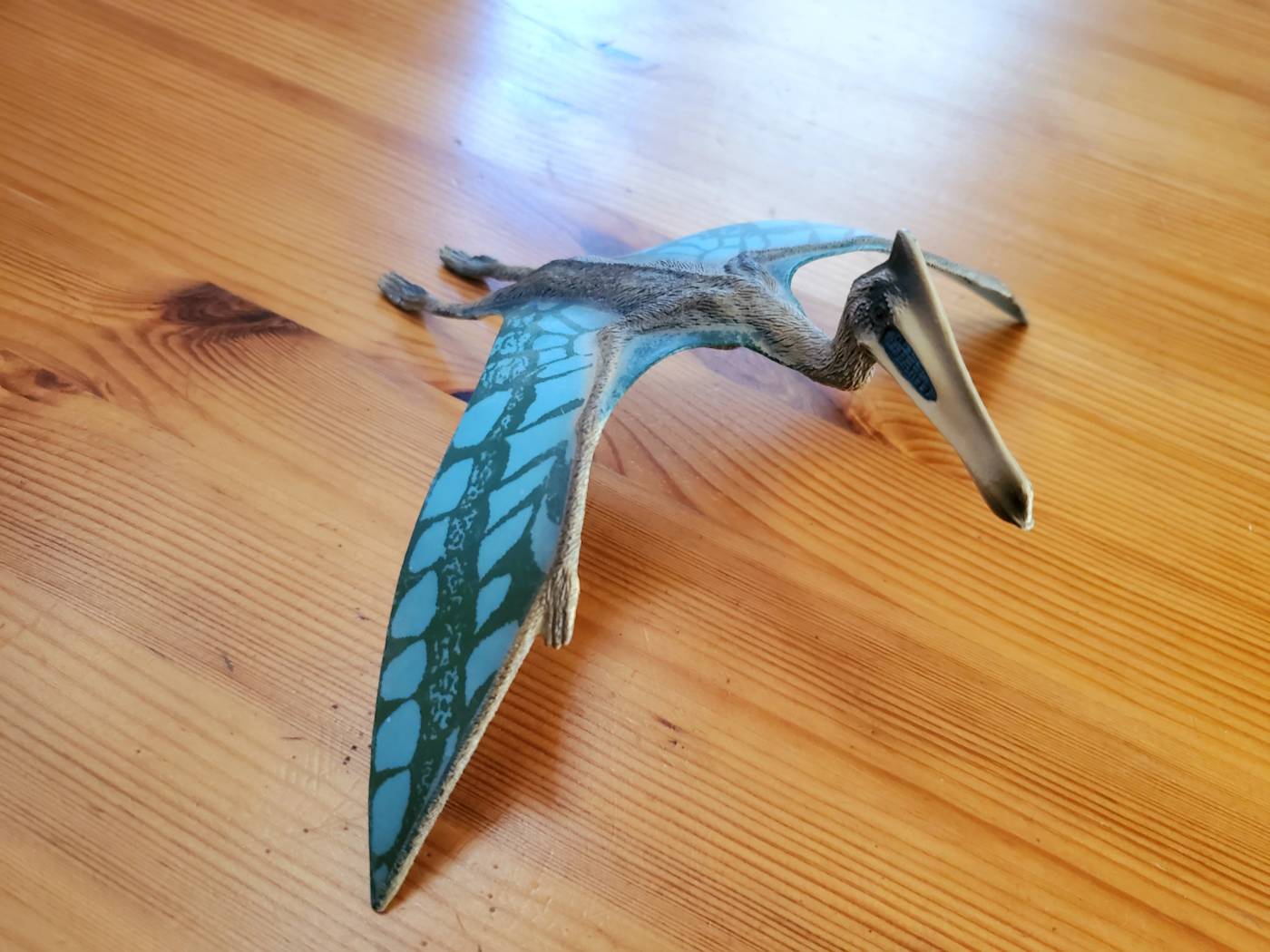
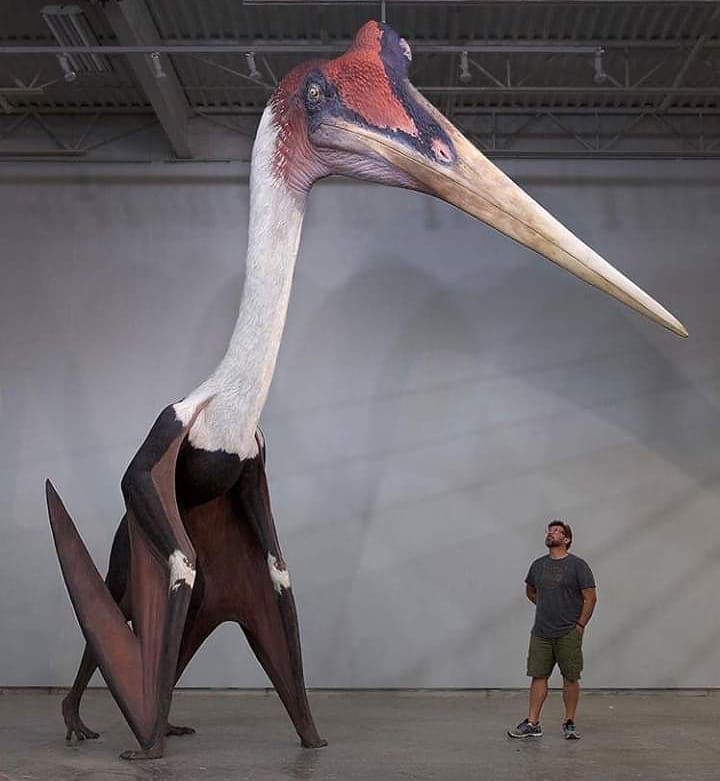
Week 4
For Week 4’s assignment, inspired by Adad Hannah’s Social Distancing portraits, I recorded my mum while she was sitting in the living room in the evening. I chose this because I wanted to film someone in a pose that was natural and routine to them during the pandemic, as this is generally where she can be found at this time of day. I almost kicked our dog out for this video but she is generally part of this routine and did a good job staying still, so I decided it would be better and more authentic if she stayed.
Week 6
Turn and Face the Strange: Darcey Steinke on Our New Life with Masks
In the article, Darcey Steinke explains how the face is crucial to our communication as humans and how a lack of facial expression disrupts how we express ourselves and how we interpret the emotions of others. I can relate to this in that my generation communicates through text more than any other, especially during the pandemic, so a lack of insight into other’s facial expressions can sometimes result in misinterpreting what they are trying to communicate. There have been several occasions where sarcasm, joking, etc. have been lost on me or other people because of the lack of a physical face to draw meaning from.
Of the various faces discussed in the article, what struck me the most was Darcey’s anecdote from the beginning, in which acquaintances recognized her and had to identify themselves because they were wearing sanitary masks. I’ve had this experience as well where I am unable to be completely sure of a person’s identity when they are wearing a mask. I think of people with masks as having half a face, and while I believe that the upper part of the face is more important when emoting, the mask severely hinders our ability to recognize and read the expressions of one another.
As humans we rely mainly on our eyesight to recognize things at a distance because we do not have very acute senses of smell or hearing. Even with a variety of features such as height, body shape, hair colour, skin colour, and clothing, we are programmed to focus and rely on faces. As Darcey mentioned, our face is a stand in for our entire selves. With my face partially covered, I believe some of my identity becomes ambiguous, and my presence and the presence of others in public spaces become less prominent.

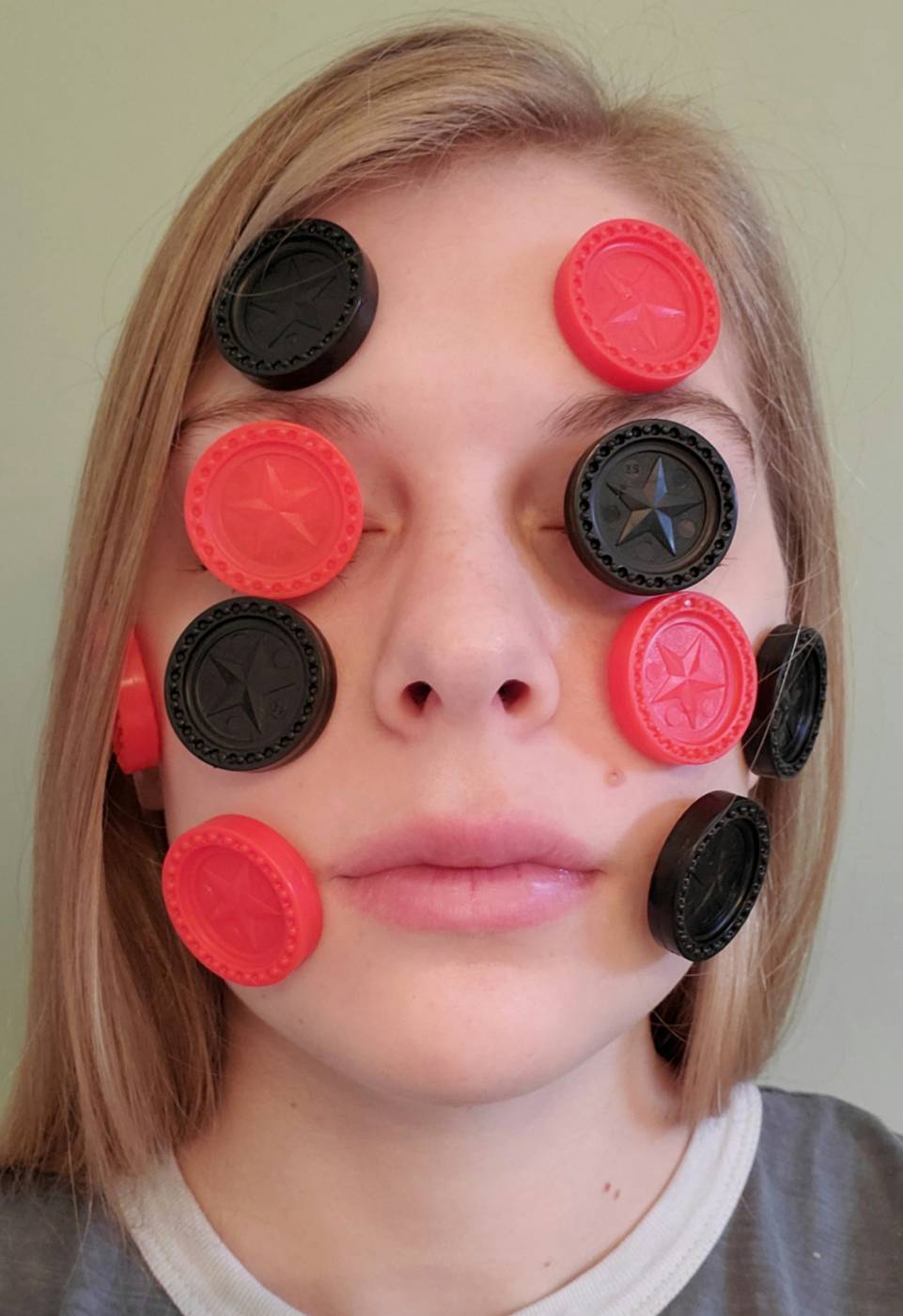
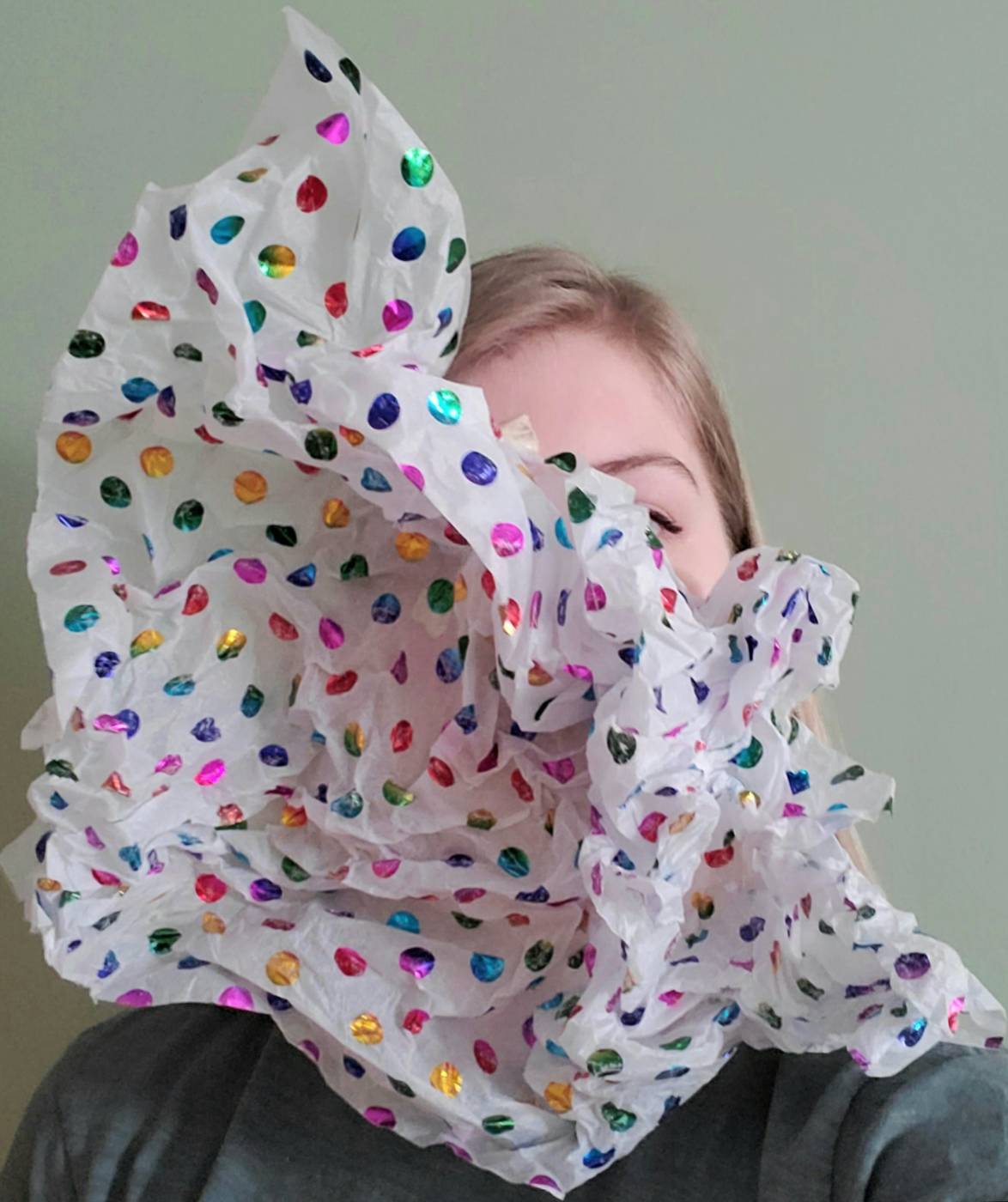
For this week’s assignment we were asked to obscure/and or transform our own faces. I was mostly inspired by Erwin Wurm’s work, and I thought it was interesting how he took mundane objects to transform people’s faces. The objects I chose to obscure my face were things that were unremarkable and nearby, but using them in this way was significant to me because of how I used them to do similar things during my childhood and I wanted to revisit the weird things I did. For the first image I was inspired to clamp a hair clip and a bobby pin on my face because I would frequently steal them to do this exact thing when I was little (I don’t know why). In the second image I stuck checkers pieces in a pattern on my face, which I used to hold up to obscure my eyes because it looked similar to the button-eyed villain from the film ‘Coraline’. In the third image my face is hidden behind tissue paper, and this idea came to me because there are several photos of me wearing or sometimes eating tissue paper during birthdays or holidays.
Week 7
For the audio assignment, I’m thinking of creating a piece that will be somewhat unsettling for the the listener. This is not because I want to be cruel to whoever listens to the audio, but because I like exploring what media makes us scared or uneasy. I recently learned about an audio trick that is often used in horror films to achieve this – the soundtracks and ambient background noise in horror films are often mixed with something called infrasound, which has such a low frequency that it is technically undetectable to the human ear but makes those who hear it uneasy.
I would like to figure out how to manipulate infrasound and add it to something such as music or mundane sounds. It would be interesting to see if listeners feel anxious when listening to the seemingly unremarkable audio or if they are unaffected
For my final audio piece, what I ended up doing was overlapping about six recordings of people coughing and adding some music with infrasound. I ended up using some music I found in an infrasound playlist on Youtube, but I was unable to locate the creator.
What I wanted to capture was the specific anxiety involved with living during a pandemic, when hearing coughing in public or in your own home can be anxiety inducing and make one seem suspicious. I chose the music (which is more subtle, you might not hear it until midway through the audio) because I thought it expressed the dizziness and alarm bell-like feeling of mounting anxiety.
I would recommend not listening to the audio when already anxious or irritable or if you’re just trying to relax, because I made it and even I really hate it.
Week 10
For the final assignment of this course, I would like to create a conceptual portrait that presents the physical space I take up. I am considering listing the cells, matter, or pieces that I am made up of in a way that is not a literal self portrait. I would like to find a way to depict what I am made up of, but this will obviously not be a simple diagram and I aim to present the biological components of being human in a way that is abstract and not instantly recognizable as being a human at all.
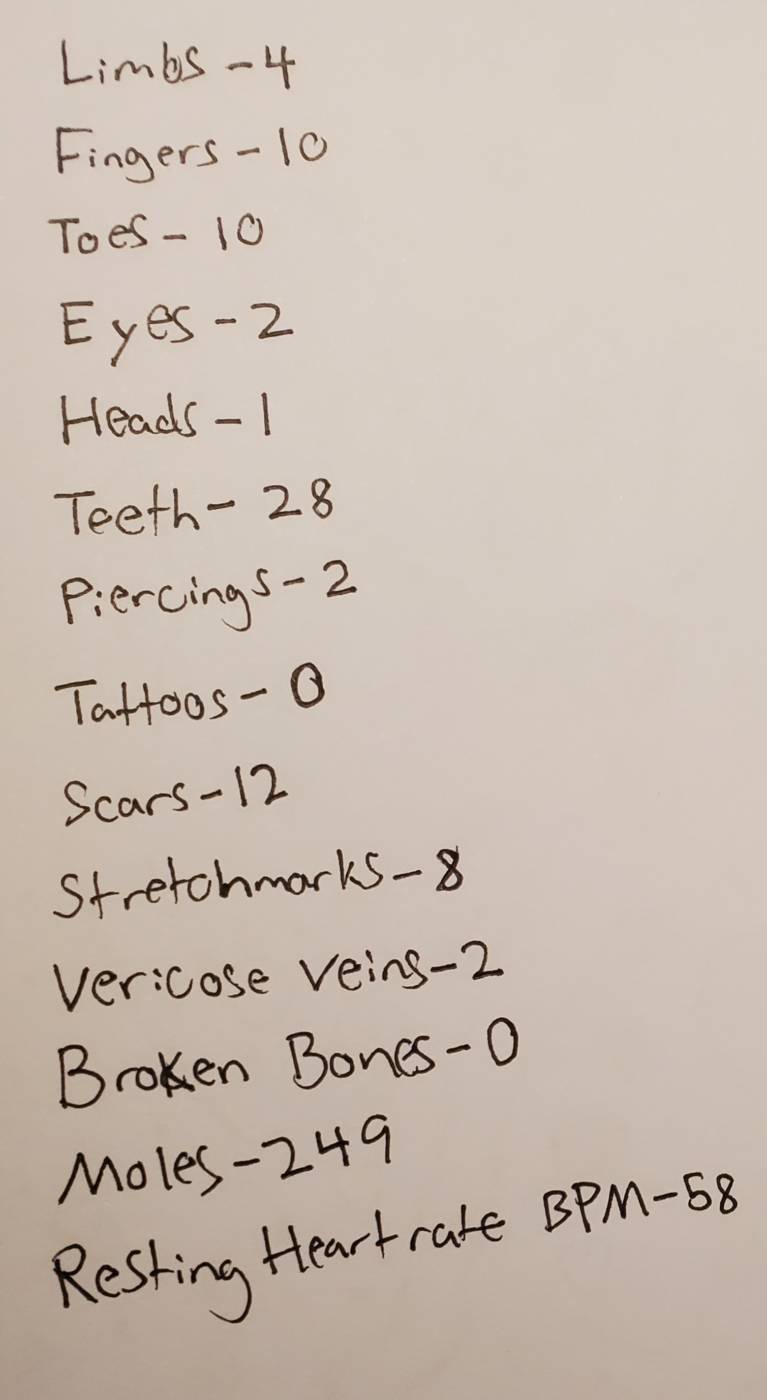
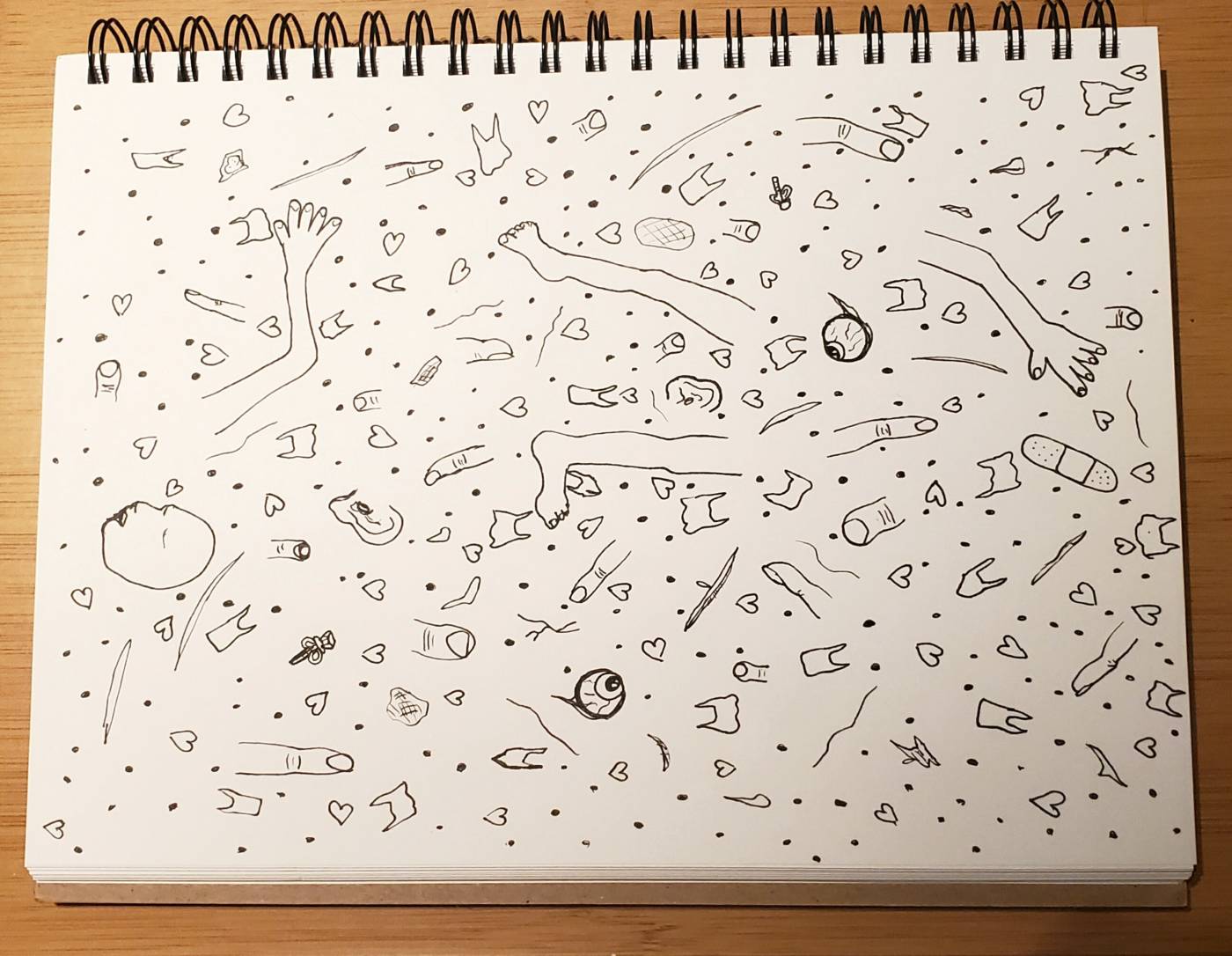
For the final assignment, I decided to create a portrait of myself by listing and illustrating various components that make up my body. I was predominantly inspired by the work of Felix Gonzalez-Torres and how he presents the weight and presence of a person’s body in his work. Some of the things I included are not physical (heartbeats per minute) or not a part of the body at all (a piercing), but I thought they were important to include because they are a part of what makes up my body and appearance. The result is that I have illustrated my self-recorded statistics on my physical appearance, and although I include all the things listed, when isolated they make up something that is unrecognizable as a person.
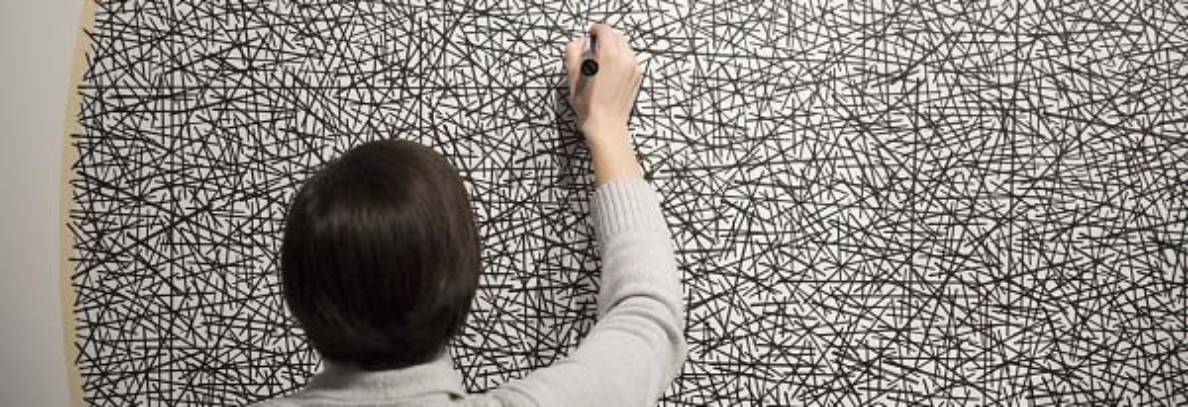
Hi Emma/Quinn!
Week 1 seems to be missing – I’ll check back here later this week –
Otherwise I really enjoy your responses to the exercises, just make sure to post those week 1 notes for full grading,
Diane
Hi Emma,
W1: Notes on Sol Lewitt, Yoko Ono, Nauman complete and thoughtful, Kilometre image and description – a good idea: a distance measured in the length of a large animal, makes it seem smaller somehow! I wonder how you might otherwise represent it to make it more interesting/less internet sourced. Like drawings? Even using language? Keep pushing things to make us feel them in new ways.
W2: Image of Abramovic/Stillness gesture, and description – good, missing some more reference or engagement with the Abramovic film/her other works.
W3: 6 conceptual sentences all good, Defenestration image and description fine – a bit unadventurous though – try to push yourself to really have a new perspective, even in your own house.
W4: 1 Distancing video portrait, and description – I really like this video, and your mom’s performance of being at home in a vulnerable way. Good and in the spirit of the Hannah, but indoors…
Overall, good evidence of engagement with material, and level of understanding of critical ideas at play, keep improving technical investment and effort, and keep seeing how far you might go with experimentation (not knowing what might happen) and adventurousness – for example taking some ambitious risks, extending things out beyond familiar zones, increasing scale etc..
Thank you for the attendance and I’d love to hear more from you in class. If you would like to talk with me about your work in progress, readings, exercises, one-on-one comments on your work, and grades – send me an email in the morning to book a 15 minute appointment during the optional contact hours: Thursdays 11:30-2:30.
And you can show up to a zoom meeting with Nathan anytime during these hours to ask your questions, and get tech support for using software and finishing your projects:
Mondays and Thursdays